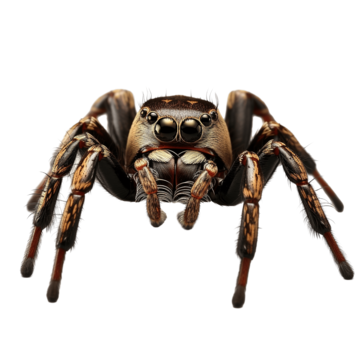Uncategorized
The Fascinating World of Jumping Spiders: Perfect Pets for All Ages
Why Jumping Spiders Make Great Pets
Jumping spiders are not only colorful and attractive, but also make delightful companions for both children and adults. These tiny arachnids, with their vivid hues and distinctive patterns, can captivate the imagination of any observer. Their small size, typically no larger than the tip of a finger, allows for ease of handling and maintenance, a significant advantage for pet owners who may lack the space for larger animals. They can be housed comfortably in compact enclosures such as terrariums or jars, making them particularly ideal for urban dwellers or individuals with limited living space.
One of the key benefits of keeping jumping spiders as pets is their interactive nature. Unlike many other arachnids, jumping spiders are known for their curious personalities and enjoy exploring their environment. This behavior provides a source of entertainment and education, especially for children. Observing these spiders as they navigate their surroundings, hunt for prey, and perform their characteristic leaps—some capable of jumping up to 7.5 times their body length—can be utterly fascinating. Such activities can foster a child’s interest in biology and the natural world, creating opportunities for learning through play.
Moreover, the maintenance of jumping spiders is straightforward, requiring minimal attention compared to more demanding pets. Their diet mostly consists of small insects, which can be easily sourced, and their enclosures need only simple substrates and occasional misting to maintain humidity. This low-maintenance aspect, coupled with the educational and entertainment value they offer, underscores why jumping spiders make great pets for people of all ages. Whether you are a child fascinated by nature or an adult looking for a unique and manageable companion, jumping spiders can bring joy and curiosity into your home.
Caring for Your Jumping Spider
While small in size, jumping spiders are highly sensitive to their surroundings and require attentive care to flourish as pets. They are adaptive creatures often found in a variety of environments such as homes, gardens, and offices, but sudden shifts in temperature can have adverse effects on their health.
Creating the ideal habitat for your jumping spider is crucial. A secure enclosure that mimics their natural environment is necessary. This habitat should include vertical space for climbing and horizontal space for jumping. Ensure the enclosure has adequate ventilation to maintain air quality and is made of materials that prevent escape, as these spiders are quick and agile.
Temperature regulation is key; jumping spiders typically prefer a stable range between 70-85°F (21-29°C). Maintaining this temperature can be achieved through environmental controls within your home, such as keeping the enclosure away from direct sunlight, drafts, and rapid temperature fluxes that may stress the spider.
Feeding routines for jumping spiders are relatively straightforward, but consistency is important. Their diet mainly consists of small insects like fruit flies, moths, and crickets. It’s advisable to offer prey every few days, and any uneaten food should be removed to prevent spoilage and maintain cleanliness. Water can be provided through misting the sides of the enclosure, allowing the spider to drink from droplets.
Health maintenance for jumping spiders includes regular observations to ensure they are active and exhibiting their characteristic behaviors, such as hunting and web-spinning. Potential issues could arise from molting difficulties, so providing a stress-free environment is critical during these periods. If you notice any signs of illness or distress, consulting with a veterinarian specializing in exotic pets is recommended.
Catching and handling jumping spiders can be challenging due to their speed. When attempting to transfer a spider into its new habitat, use gentle methods such as coaxing it into a container rather than direct handling. This minimizes the risk of injury to both you and the spider.
By meticulously replicating their natural environment and adhering to proper care routines, you can create a safe and stimulating home for your jumping spider, ensuring a thriving and fascinating pet experience.
